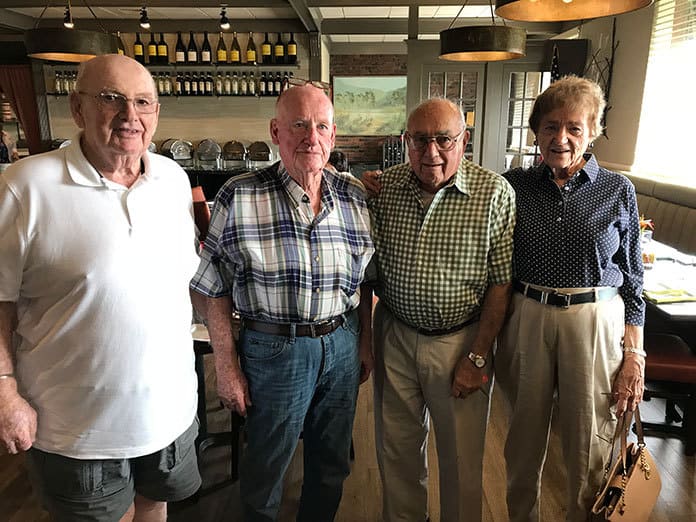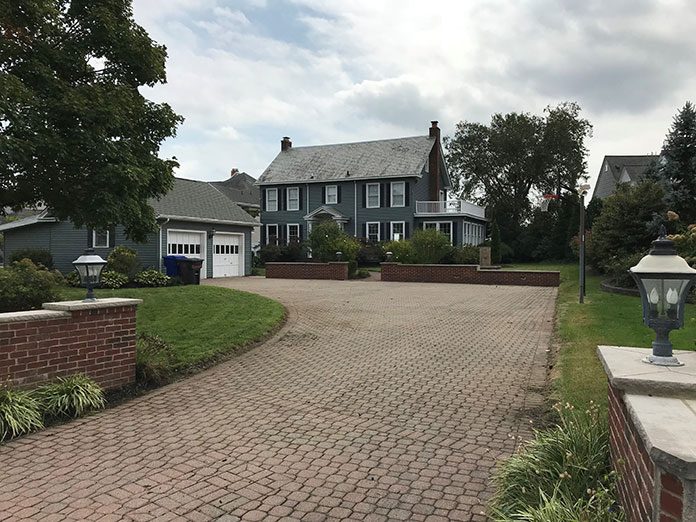
Scene 1
FADE IN:
Ext. Suburban street. Four decades ago. Nice houses flank the winding road. Off in the distance, a river passes through.
An actor and an actress approach a house on a quiet street. A camera crew frames them against the house. It’s a sunny day, but the actor and actress have to pretend something dark is happening. Outside the view of the camera are scores of crew members waiting in place, ready to jump into their assigned duties. Even further beyond that are the inhabitants of the town – teachers, shopkeepers, all types of people, try to go through their daily lives as a bustling movie shoot has descended upon their town.
Scene 2
Int. Restaurant. Modern day. Robert O’Neill, John Thievon, and Pat and L. Manuel Hirschblond sit around a table with a reporter, discussing that one time, four decades ago, that the town felt part of the action – whether they wanted to be or not.
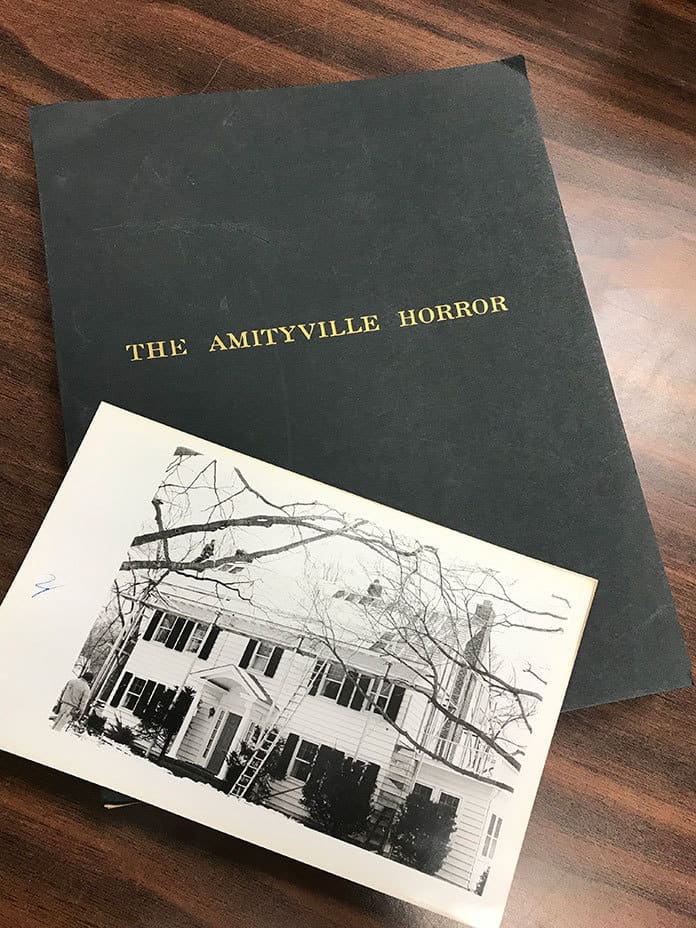
The film, of course, is “The Amityville Horror,” the first of a series of horror movies. The film will soon have its 40th anniversary. There were also a few scenes shot locally in sequels, but when Amityville came to Toms River, it was something that had never happened before – and likely would never happen again.
The real house, where a family was murdered, still stands in Long Island. A book chronicles the story of a haunting that allegedly took place with the Lutz family that moved in afterward. The movie was based on the book. But like that story, recollections of the filming get a little fuzzy.
Naturally, people in Long Island were not keen on having a horror movie filmed where actual horror took place. So, the production company had to find a suitable location, Hirschblond said.
Before he was the township clerk, Hirschblond was the division manager with Walter Reade theaters. He recalled that a connection through the theater world reached out to him, saying that the film was looking for locations in New Jersey.
They had a picture of a New England home that they wanted to film in. Hirschblond said immediately he knew a house that was a virtual twin. No one could believe how close the connection was. That house still stands on Brooks Road, in downtown Toms River. It is much prettier today, but those eye-like windows on the side are iconic.
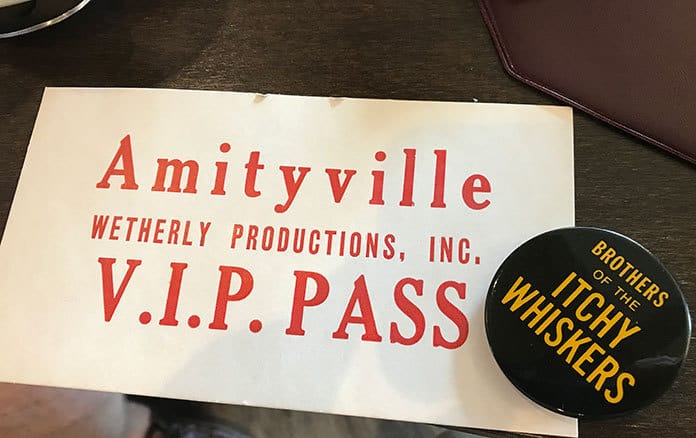
Being the clerk, he had to get the OK from the town’s governing body. Nobody really knew what filming a movie was going to be like. Overall, it was a positive experience, even if it was inconvenient for the residents for the short duration of the filming.
The Holiday Inn on Route 37 (now a Days Hotel) was new at the time. It became the production’s base of operations. The cast and crew stayed there. Phone service had to be brought into rooms for their offices. Russ Saunders, the production manager, had two or three rooms to himself. So did the “money people.”
“After they decided where they wanted to go, the biggest thing was taking care of the residents,” said O’Neill, who was the town’s code enforcer at the time.
Roads were closed off. If a resident had a problem, they would go to the production company, not the town.
“Russ Saunders, the production manager, said ‘It’s a big zoo,’ and it’s true,” he said. There are so many moving parts, unions, people in charge of this and that, that it was dizzying to an outsider, but the manager held it all together.
In Hollywood, they would just build a location on a lot. But when filming in a town, they have to play by the rules. So, when they needed to build a boat house, they had to go through the Board of Adjustment, he said. This boat house was more sturdy than anything else on the river, with 15-inch pilings. It was made so that the walls could pull out to make room for the camera and staff.
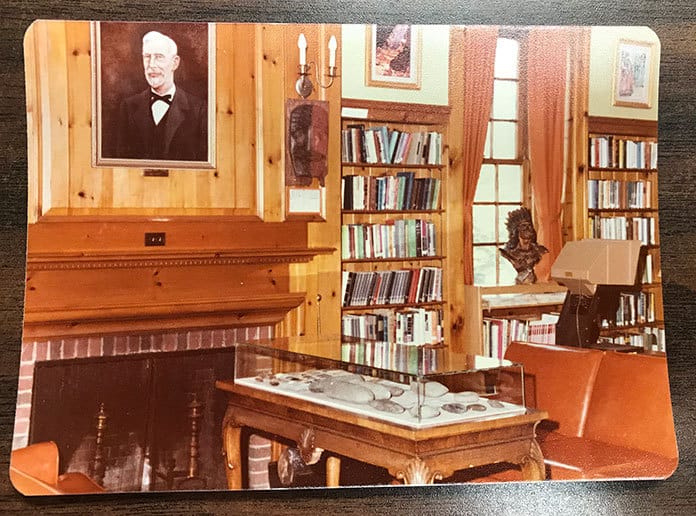
The actual production around the house was extremely efficient, if chaotic to the naked eye. It only took about two weeks of actual filming, because they had spent time doing prep work, O’Neill said. An older woman who lived next door was worried about the disruption, but they took care to make sure she was happy.
Hirschblond remembered how there was a food tent in a park on Water Street and was open 24 hours a day. You could get anything and everything there. He compared it to a military field kitchen in operation except that the food was amazing.
John Thievon was a patrolman in the police department at the time. Off-duty officers provided security on the set, and they were paid for their services.
It was basically crowd control, he said. They wanted the cast to feel comfortable that they weren’t going to be annoyed by the public.
Anyone who was supposed to be on the set were given pins that said “Brothers of the Itchy Whiskers,” O’Neill said. They needed a phrase that a local wouldn’t be able to guess, and therefore fake, in order to get access.
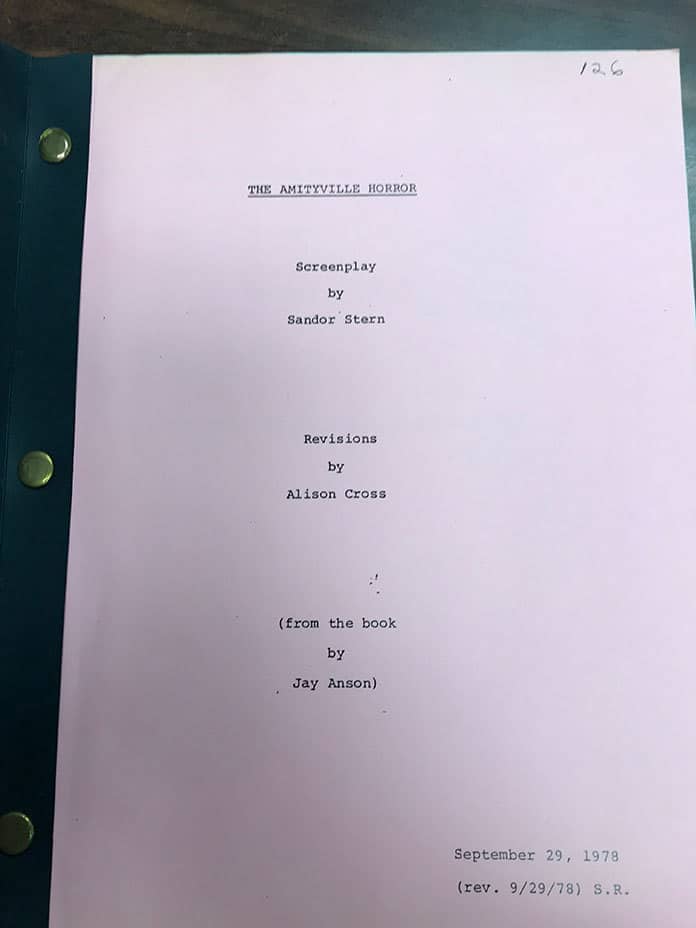
“The biggest problem was controlling the area and getting everyone to be quiet when they were shooting. Everybody wanted to get as close as possible,” he said.
Thievon agreed. “They all wanted to get their face in (the movie).”
Some did.
Locals In The Movie
While the average residents were kept off the set, a few locals got caught up in the act.
“It was amazing when you see it all together,” Pat Hirschblond said.
A few locals would become extras when they needed people to, say, carry bodies out of a house.
Watching the movie, the locals would laugh when they saw a familiar face, she said. It could be a serious scene, but oh, hey, there’s my neighbor!
There was a crane shot filmed from a ladder on the fire truck. “It was shot one time and it was perfect,” O’Neill said. The firefighters were told that the camera crews from Hollywood could come here and take a lesson from them.
They also needed the fire hose to create the illusion of rain. They needed to shut down the power in the area, but the production company didn’t want to wait. “Tom, you’re costing me money,” the director, Stu Rosenberg, said to O’Neill. As a result, wires got wet and started a small fire.
Someone from the fire department would take the proofs from the day and run them up to New York so they could get developed. They called this “rushes.” The film would be brought back and watched in a makeshift theater at the Holiday Inn.
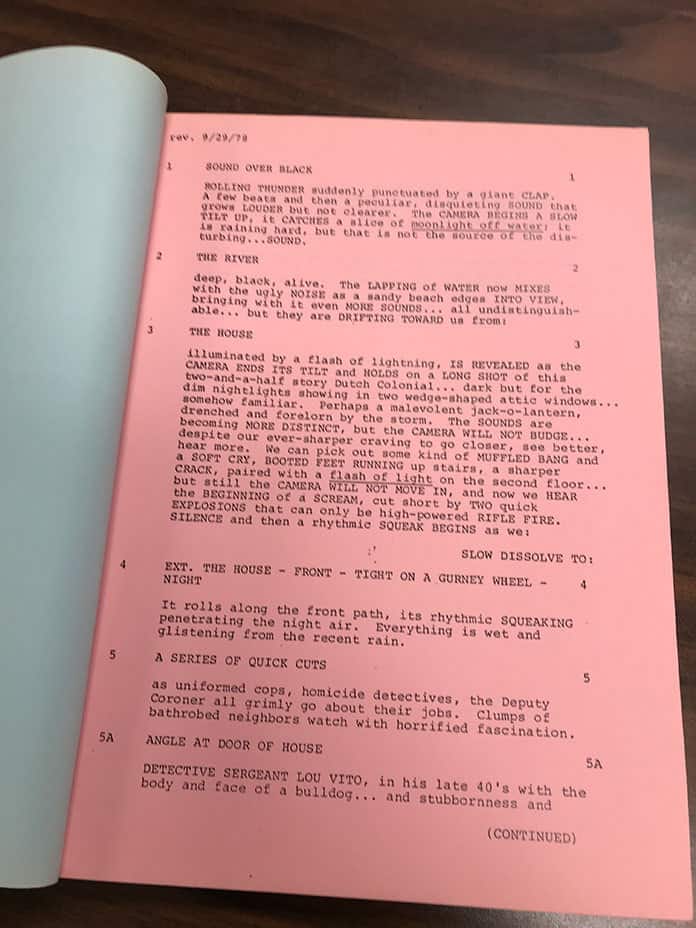
At one point, they hired a man who lived in Island Heights to drive his speed boat up and down the Toms River because there needed to be waves on the water.
Pat Hirschblond said their son took forestry classes and took part in woodsmen competitions, so when they needed Brolin to throw an ax into a tree, he came to their house so their son could teach him. He didn’t quite master it, so their son, Tom, came to the set to do it for him.
“In the film, Brolin throws the ax, but our son Tom threw it,” she said. “The crew was betting whether Tom could do it in one try.”
Boost To Economy
One can only imagine how much movie money was spent in Toms River.
Town and Country Chevrolet provided the cars, and trailers for the stars, O’Neill said. The windows had too much tint, which couldn’t be photographed through, so they had to find someone locally to replace all the glass. And when they were done with production, they took the trailers back with them to California.
There were so many people who were involved back then, that it was difficult to remember them all. A caterer from California made all the food, but all the ingredients were bought locally. A local contractor, whose name might have been Thomas Ventimeglia, built the boat house. Jimmy Baldwin built the dock. Gene Worden from Arrow Travel made travel arrangements. Charney’s stationary, which was downtown in the area where Capone’s is now, provided office supplies.
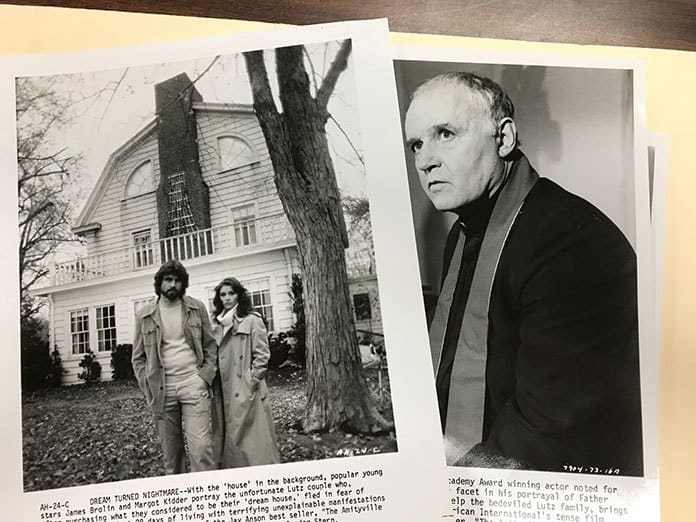
The studio gave a monetary donation to the fire department. They paid drivers to take people around. They bought lumber and building materials. At one point, they needed a fan to create wind. They gifted it to the fire department, which used it as a smoke ejector. They even visited the beach.
“The California guys said our beach was better,” O’Neill said.
The Cast
James Brolin was a sex symbol, and women would fill the bar at the Holiday Inn hoping to get a glimpse of him.
The owner of the house had a flight simulator in an upstairs room, Thievon said. Brolin was practicing to get a pilot’s license, so he spent a lot of down time in the simulator.
“When he wasn’t shooting, he would go upstairs and learn how to fly,” he said.
Kidder showed signs of some of the problems that would eventually become more well known.
“The only time Margot Kidder was around was when she wanted a cigarette,” he joked. “It got to the point I just gave her a pack.”
Kidder’s daughter had a birthday at the time of the filming, Pat Hirschblond said. She didn’t want her daughter to celebrate alone, so she invited a bunch of local kids who were the same age to her party.
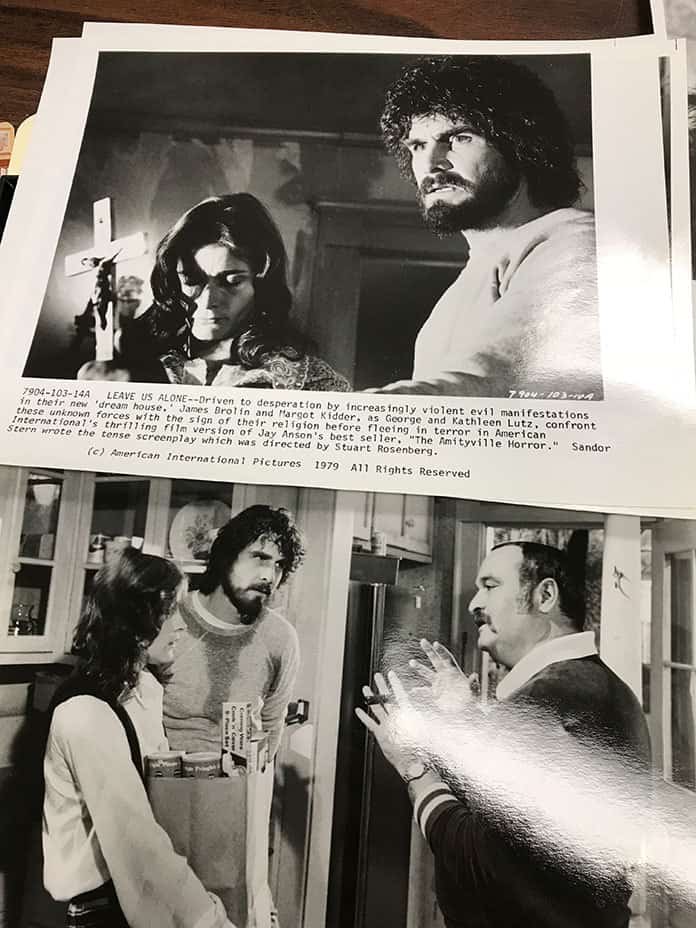
Rod Steiger apparently used to work in Seaside when he was a kid, O’Neill said. He disappeared and no one could find him. Turns out he went over to Seaside and was looking up old friends.
O’Neill said Steiger was extremely friendly and would get along with everyone.
Brolin was “too good to be around” anyone else, and mostly kept to himself, O’Neill said. Pat Hirschblond mentioned that “when he came for coffee, he was very pleasant.”
At one point, he went to the Ocean County Mall. Without any make-up or his hair done, he was unrecognizable. No security was needed. He just went about his business.
Could Amityville Be Filmed Today?
The Amityville experience briefly transformed Toms River, and when filming was done, Toms River transformed back to the family-centric suburb it was before.
Decades ago, everybody knew each other in town. If the crew needed something, a local would be able to help. Or, they’d ‘know a guy.’ Local people owned the shops, and they all lived where they worked. Now, that kind of cohesion is gone, O’Neill said.
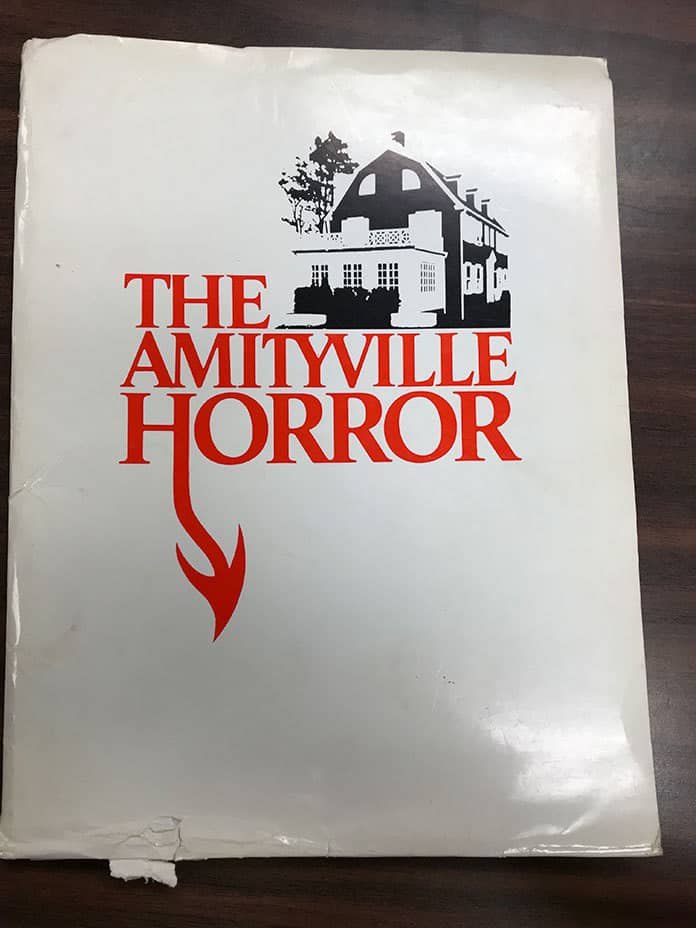
“The people accepted it much easier than, I think, if it happened now,” O’Neill said.
“The governing body had a lot of questions,” Hirschblond said. “We never had that problem before and probably never will again.”
The closest thing that had happened after that was when the “Jersey Shore” show filmed in Ocean County, which brought with it more infamy than the story of haunted houses and mass murders.
Toms River, The Big Star
The house was featured so prominently, it was like the main character of the movie. But there were other locations given bit parts.
A document from the Ocean County Library thanked the filmmakers for their donation of 37 art prints donated by Ross Saunders, and noted that some of the filming took place in the Bishop building, which is operated by the library. In that scene, Brolin’s character is doing research and steals a book. The Ocean County Historical Society has that document and many artifacts from the set, including original scripts. One script even had a minor character’s name change.
When you’re watching the film, you find yourself looking behind the actors, at the corners of the screen, seeking familiar faces and places. There’s a scene where Brolin is riding his motorcycle down Washington Street. He drives past the church there. He’s in front of the courthouse. Kidder drives over the bridge toward Seaside. In a scene shot in a bar, they were in the Merry Monk. The priests have a scene on the grounds at Georgian Court. After a boy gets hurt, there’s a scene in a hospital parking lot. Some of those buildings, like the church, still look the same. The few times they are on the road, however, it could be any road. Everything has changed in 40 years.
A 1982 document for Amityville: The Possession (currently on hand at the Ocean County Historical Society) has hand-drawn directions to Saint Peter’s church in Point Pleasant Beach. This was where the big church scene was filmed, with Rod Steiger’s priest being haunted as he’s trying to pray.
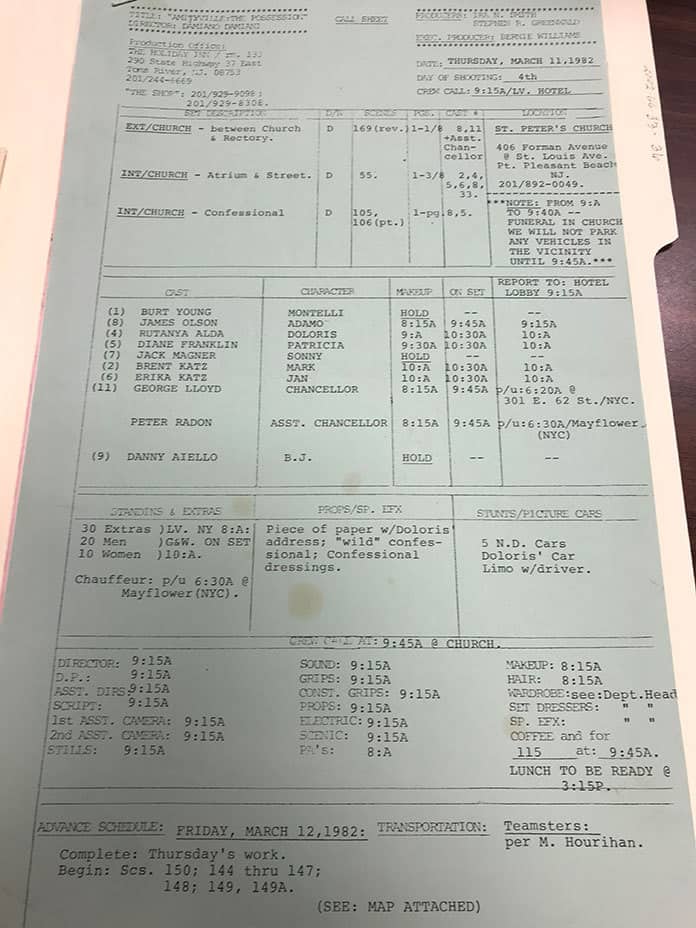
“They wanted to look at the Cathedral of the Air but the Navy wanted nothing to do with that,” O’Neill said. The Cathedral of the Air is an iconic church that, due to its connection with the military base, has aircraft in its stained glass windows.
During the third movie, an article written in 1983 said that neighbors were inconvenienced by a helicopter flying over the house all night to create a wind storm for a scene. It also noted that the Ocean County Courthouse, the Sweet Shop on Main Street, and the exterior of the house were filmed for the movie. However, all interior shots of the house weren’t filmed in Toms River, but in Mexico.
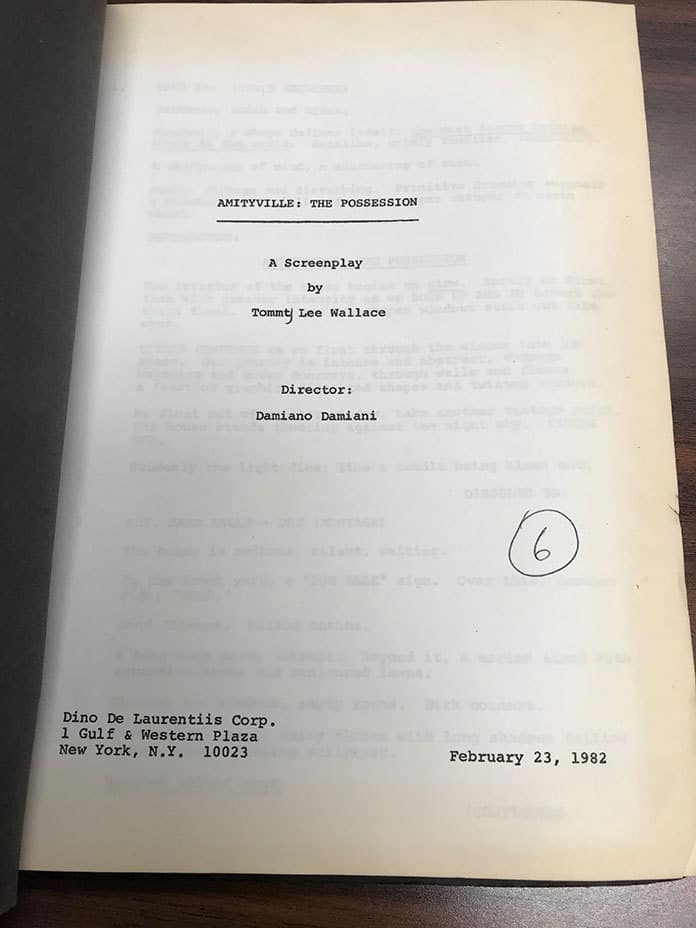
At one point, when the characters are discussing the murders that happened in the house’s history, Brolin’s character says “Houses don’t have memories.”
But the people who live here do.
